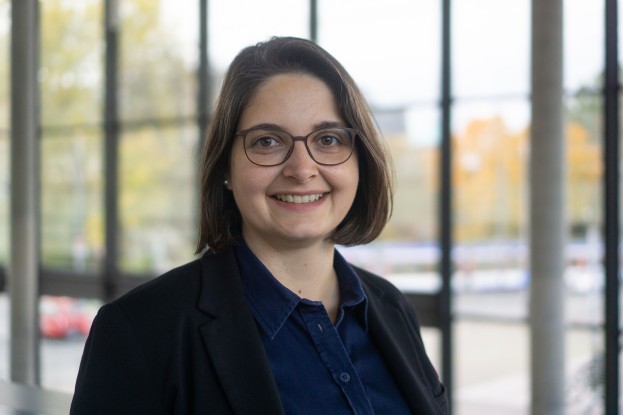Active Matter
Our research focuses on active soft matter which comprises motile agents such as bacteria or synthetic colloidal microswimmers which locally inject energy into the system. Following this local driving, active matter is intrinsically out of equilibrium and shows a rich panorama of dynamical phenomena beyond equilibrium physics. These range from the emergence of spontaneous directed motion in an unbiased environment to the occurrence of self-organized living clusters, traveling waves and other patterns. In our group we use a theoretical physics perspective and use tools from statistical physics, stochastic processes as well as computer simulations to face the challenge of understanding these phenomena.
In particular we are interested in the following questions, on each of which we can offer problems:
- How does an active particle acquire self-propulsion?
A fish or a scallop would not move after shrinking them to the micron-scale. This is because inertia is unimportant at these scales such that motion only takes place as long as forces are acting on the fluid. As a consequence, a scallop, which normally moves by slowly opening its shell and rapidly closing it, would only oscillate back and forth rather than persistently moving forward. More generally, the so-called Scallop theorem tells us that reciprocal shape-deformations of a swimmer do not create any persistent directed motion at small scales. To bypass this theorem, some bacteria feature chiral structures (flagella) which they continuously rotate to create directed motion. Unfortunately, however, in the 21st century we can still not create such micromechanical motors at the micron-scale. To create synthetic microswimmers we therefore need novel self-propulsion mechanisms which bypass the Scallop theorem. Remarkably, such mechanisms have recently become available and now serve as a promising platform for future applications regarding e.g. targeted drug and gene delivery and the creation of new nonequilibrium materials. In our group we are interested in uncovering the precise mechanisms leading to self-propulsion (which often include a complex interplay of the fluid flow, concentration fields and the particle motion) based on the creation of models and a combination of analytical calculations, computer simulations and cooperations with our experimental partners.
- How do active particles interact with each other?
As compared to the interactions of most passive building blocks which make up conventional matter, the interactions among synthetic active particles like colloidal microswimmers or droplet swimmers are not yet well understood. This is largely owed to the complex and unconventional hydrodynamic and so-called phoretic cross-interactions among these particles which can have a range of unusual properties: they are in general long-ranged, non-instantaneous, non-reciprocal and non-pairwise. A precise understanding of these interactions is the basis for formulating theories for the collective behavior of active particles. See our recent works: https://pubs.acs.org/doi/10.1021/acs.accounts.8b00215 and https://arxiv.org/abs/2110.15249 for an overview.
- What is the collective behavior of many active particles?
The combination of the motility and the unusual interactions of active particles leads to a rich panorama of patterns and other dynamical structures with unusual properties. For instance, the non-reciprocal interactions in mixtures of certain colloids can lead to active molecules and so-called droploid superstructures which spontaneously acquire motility from non-motile components. For a recent example see our work: https://www.nature.com/articles/s41467-021-26319-3 and check our homepage (link below) for more examples.
For further detailed information on our research please have a look at our webpage and publications:
If you are interested to work with us please specifiy your desired project focus (i.e. which of the above questions would be most interesting for you) or provide an alternative suggestion/combination of the above mentioned topics.
Additional Information
| Supervisor | Prof. Dr. Benno Liebchen |
| Availability | Fall 2025 |
| Capacity | No limit |
| Credits | 18 ECTS |
| Remote Option | No |



